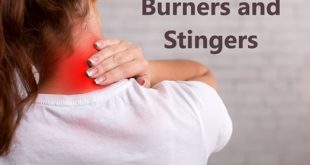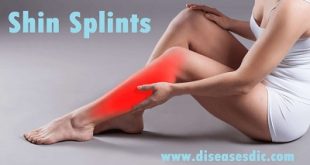Definition
Bursitis is a painful condition that happens when you have inflammation of a bursa. Bursae are small fluid-filled pads (or sacs) found near your joints. They act like cushions, reducing friction by allowing tendons and muscles to move smoothly over bones and other structures.
One of the most common areas for bursitis is the shoulder joint, which has the greatest range of motion of all the body’s major joints. The pain is usually felt along the outside top of the shoulder. Other joints commonly affected by this condition are the elbows, hips, knees and heels. Bursitis can usually be treated with self-care measures and pain relievers, but sometimes corticosteroid injections or (rarely) surgery may be recommended.
Epidemiology
The bursa itself is a synovial lining that represents a potential space, insofar as it is collapsed upon itself until a resulting trigger causes the bursa to become irritated and fill with synovial fluid. The patient experiences pain when the inflamed bursa is then compressed against bone, muscle, tendon, ligaments, or skin. Despite the moniker, not all bursitis is associated with an overt inflammatory process. That said, the examination of the subacromial bursa in patients with subacromial bursitis has revealed increased inflammatory mediators such as tumor necrosis factor-alpha, cyclooxygenases, and specific interleukins.
Types of Bursitis
It can happen in any bursa in the body, there are dozens of different types of bursitis. Here are some of the most common types of bursitis.
Shoulder Bursitis: When the shoulder bursa that enables the movement of the rotator cuff becomes inflamed, this results in subacromial bursitis.
Hip Bursitis: Also called trochanteric bursitis, hip bursitis causes pain on the outside of the hip joint and is more common in women and the elderly. This condition is sometimes mistaken for arthritis, which is typically felt in the groin, thigh or buttocks.
Anterior and Posterior Achilles Tendon Bursitis: The anterior version is also called Albert’s disease or retromalleolar tendon bursitis, while the posterior version is also called Haglund’s deformity. Both can be caused by injury, poorly fitting shoes, and poor walking habits.
Elbow Bursitis: Also called olecranon bursitis, elbow bursitis occurs around the olecranon, the bony structure at the top of the ulna bone on the back of the elbow. The olecranon bursa is the type of bursa most likely to become infected due to scrapes, cuts, or even injections.
Knee and Kneecap Bursitis: Knee bursitis, also called goosefoot or Pes Anserine bursitis, occurs on the inside of the knee between the shin bone and the hamstring tendons. Kneecap bursitis, or prepatellar bursitis, is felt on the front of the knee, often by people who spend a lot of time of their knees, such as flooring installers and plumbers.
Bursitis risk factors
Risk factors that can include:
- Rheumatoid arthritis, gout or pseudogout: These inflammatory diseases that cause your immune system to attack your joints can increase your risk for bursitis.
- Previous surgery: Surgery or prosthetic joint implants can cause irritation that leads to bursitis.
- Bone spurs or calcium deposits: Bone spurs or calcium deposits near the bursa can cause irritation that leads to bursitis.
- Other conditions: Different conditions can increase the risk for bursitis in certain areas. For example, one leg being significantly shorter than the other can cause bursitis of the hip, and certain spinal diseases can cause bursitis of the hip or back.
Causes
There are three different causes include.
Overuse: The most common is cause of bursitis is repetitive physical stress to the bursa. This can be found in athletes (such as retrocalcaneal bursitis in runners) or in people with certain occupations (prepatellar bursitis in carpet layers).
Infection: The bursal sac can get infected with bacteria, resulting in septic bursitis.
Secondary: Bursitis can develop secondary to a variety of arthritic diseases, including osteoarthritis, rheumatoid arthritis, gout, CPPD crystal deposition and ankylosing spondylitis.
Bursitis symptoms
The symptoms are directly related to the degree of inflammation present in the bursa and the location of the bursa involved.
- The inflamed bursa can cause Localized pain and tenderness.
- If the bursa is so inflamed that swelling occurs, it can cause local swelling and stiffness, sometimes associated with local redness and warmth.
- The inflammation can make it painful to support body pressure. For example:
- Hip bursitis can make it difficult to lie on the affected side of the hip
- Bursitis of the inner knee (anserine bursitis) can make it painful to lie with the knees touching each other.
Because there are 160 bursae in the body, there are many different areas of the body that can be affected by bursitis. The symptoms may affect the side of the hip (trochanteric bursitis), shoulder (subacromial or sub deltoid bursitis), the elbow (olecranon bursitis), the knee (pes anserine bursitis on the inner aspect of the knee, prepatellar bursitis on top of the kneecap), the ischial tuberosity in the buttock (ischial bursitis), or the foot and heel (calcaneal bursitis, intermetatarsal bursitis).
Elbow bursitis
Complications of Bursitis
It does not usually result in serious complications. Serious bursitis and chronic bursitis can have some rare complications. The most common complication of bursitis, especially when not treated promptly, is recurrence.
You can help minimize your risk of serious complications by following the treatment plan you and your health care professional design specifically for you. Complications of bursitis include:
- Chronic pain in the affected joint
- Injury or brittleness of the tendons resulting from steroid injections
- Limited motion in the affected joint
- Severe infection
Diagnosis and test
Diagnosis helps in identification of cause of discomfort. Once the cause of disease is identified, the treatment becomes easy. Various diagnostic approaches for bursitis include:
Physical Examination: The doctor would examine the patient physically for the signs and symptoms of bursitis. Information related to the patient’s medical history, family history and recent accident are obtained.
Fluid Test: In case of increased body temperature, the doctor would collect the fluid sample from the affected joint to detect the presence of crystals or bacteria.
Blood Tests: The patient’s blood sample is collected and is tested for rheumatoid arthritis.
Imaging Tests
The doctor would recommend the following imaging tests to rule out other conditions causing the symptoms of bursitis.
- X-ray: The doctor would recommend the X-ray of the affected joint to detect any kind of fractures or joint abnormalities.
- Magnetic Resonance Imaging (MRI): MRI uses radio waves to obtain a detailed image of the targeted joint. In this test, a dye is injected into the patient’s veins. The MRI machine captures cross-sectional images of joint and combines to create 3D-images to have a better view of various angles.
- Computerized Tomography (CT) Scan: In this procedure, the doctor would give a contrast substance by mouth or through an intravenous line to facilitate the clear examination of the organ. CT scan helps to create a detailed image of joint and detect torn tendons.
Bursitis treatment
Bursitis may go away over time. If they don’t, the doctor will focus on reducing pain and inflammation and preserving mobility to prevent disability and recurrence. He or she may refer you to a rheumatologist, an orthopaedic surgeon or a physical therapist for specialized treatment, if necessary. When properly treated, most of these conditions don’t result in permanent joint damage or disability.
Common bursitis treatment options include:
Rest and Splints
Many soft tissue conditions are caused by muscle overuse, so the first treatment may include resting the painful area or avoiding a particular activity for a while. Splints, braces or slings allow a particular area to rest until the pain eases.
Hot and Cold Therapy
A cold compress can help reduce initial swelling and pain. Cold therapy is usually most effective during the first 48 hours after overuse, injury or swelling begins. After 48 hours or for chronic (long-term) pain, dry or moist heat (e.g., warm bath) may be more helpful than cold compresses.
Over-the-Counter and Prescription Medicines
These medicines help relieve pain and/or inflammation. The doctor may recommend an over-the-counter analgesic (pain reliever), such as acetaminophen or a nonsteroidal anti-inflammatory drug (NSAID), such as aspirin, ibuprofen or naproxen. Depending on the severity of the symptoms, doctors may prescribe a stronger version of an analgesic or NSAID.
Corticosteroids Injections
Corticosteroids are powerful anti-inflammatory medicines. They are injected directly into a joint in a doctor’s office.
Physical Therapy
A physical therapist can provide the following:
- Hot/cold treatments, ultrasound (sound wave), laser and water therapy
- Soft tissue or joint mobilization (manual therapy)
- Orthotics or pressure-relieving devices for the arms and legs
- A personalized exercise program
- Analysis of posture and walking
- Education regarding appropriate activities to allow healing to occur
Occupational Therapy
An occupational therapist can recommend modifications for daily activities and work habits to prevent re-injury. He can create hand and wrist splints and suggest assistive devices to help make daily activities easier.
Surgery
Used when an inflamed bursa must be surgically drained; removing the affected bursa is rarely necessary.
Prevention of Bursitis
Some types of bursitis cannot be prevented. There are certain things you can do to help reduce your risk of bursitis due to overstrain or overuse of a joint. These prevention methods include the following:
Exercise, warming up, and stretching: Exercise and stretching help keep the muscles conditioned, which makes it less likely for bursitis to occur.
Using kneeling pads: If you know you will be kneeling for a long period of time, use a padding to reduce the pressure on your knees.
Taking breaks: Make sure to alternate repetitive tasks with rest so the joints do not become over-strained.
Lifting properly: Bend your knees when you lift. Failing to do so puts extra stress on the bursae in your hips.
Wheeling heavy loads: Avoid carrying heavy loads as carrying heavy loads puts stress on the bursae in your shoulders.
Maintaining a healthy weight: Being overweight places more stress on your joints.
A bursa is a fluid-filled sac that cushions the bone from other moving parts, such as tendons, muscles, and skin. Bursitis is when the bursa becomes inflamed, and usually happens with overuse or injury. Bursitis is not the same thing as tendonitis.
 Diseases Treatments Dictionary This is complete solution to read all diseases treatments Which covers Prevention, Causes, Symptoms, Medical Terms, Drugs, Prescription, Natural Remedies with cures and Treatments. Most of the common diseases were listed in names, split with categories.
Diseases Treatments Dictionary This is complete solution to read all diseases treatments Which covers Prevention, Causes, Symptoms, Medical Terms, Drugs, Prescription, Natural Remedies with cures and Treatments. Most of the common diseases were listed in names, split with categories.







